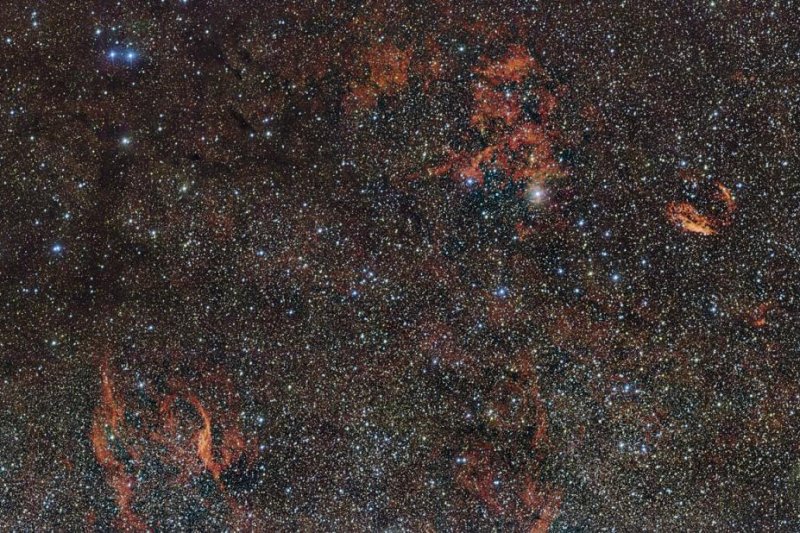CERRO PARANAL, Chile, March 2 (UPI) -- A new image published by the European Southern Observatory features a series of rare, massive stars shrouded by thick and sprawling crimson-colored gas cloud. The stars themselves can't be seen via visible light, but their energy gives the surrounding cosmic gas its penetrating glow.
The red cloud is known as RCW 106. It's located 12,000 light-years away in the southern constellation Norma, and is part of a region of the southern Milky Way called H II.















